Beginning with the new year, I wanted to commit myself to some predictions, as I did last year, even though they constantly change with new data.
I recently read Proto-Indo-European homelands – ancient genetic clues at last?, by Edward Pegler, which is a good summary of the current state of the art in the Indo-European question for many geneticists – and thus a great example of how well Genetics can influence Indo-European studies, and how badly it can be used to interpret actual cultural events – although more time is necessary for some to realize it. Notice for example the distribution of ‘Yamnaya’ in 3000 BC, all the way to Latvia (based on the initial findings of Mathieson et al. 2017), and the map of 2000 BC with ‘Corded Ware’, both suggesting communities linked by admixture and unrelated to actual cultures.
Some people – especially those interested in keeping a simplistic picture of Europe, either divided into admixture groups or simplistic R1b-Vasconic / R1a-Indo-European / N1c-Uralic (or any combination thereof) – want (others) to believe that I am linking ‘Indo-Europeans’ with haplogroup R1b. That is simply not true. In fact, my model dismisses such simplistic identifications of the reconstructible proto-languages with any modern peoples, admixtures, or haplogroups.
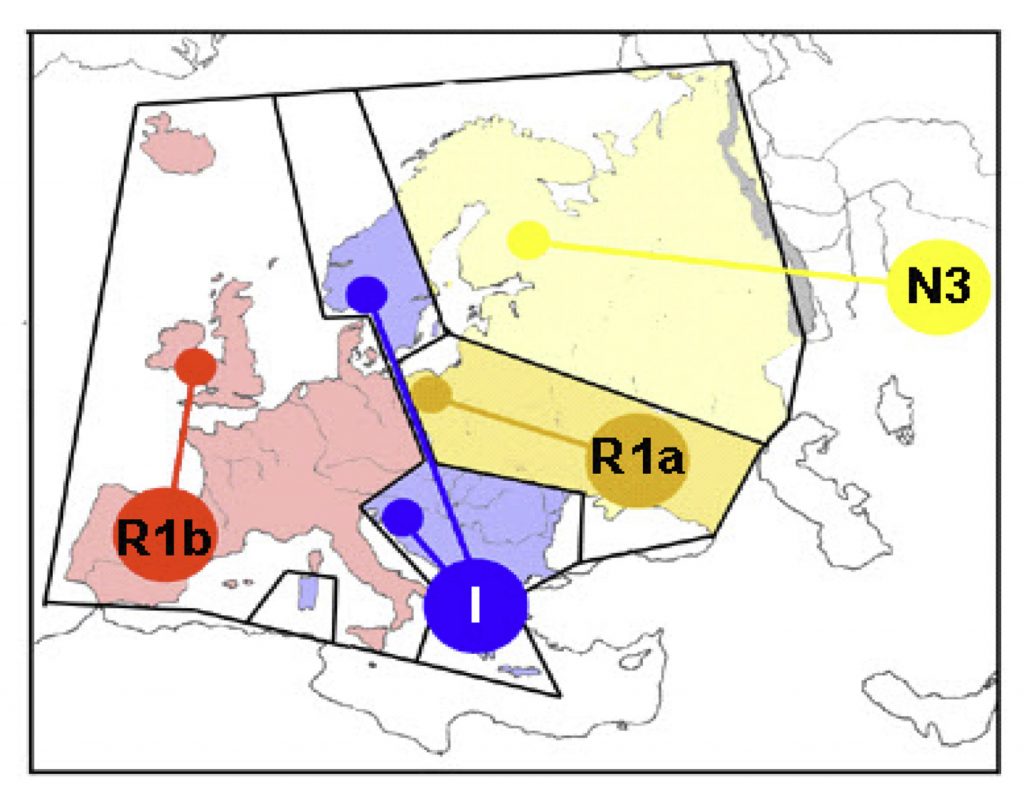
The beauty of the model lies, therefore, precisely in that if you take any modern group speaking Indo-European languages, none can trace back their combination of language, admixture, and/or haplogroup to a common Indo-European-speaking people. All our ancestral lines have no doubt changed language families (and indeed cultures), they have admixed, and our European regions’ paternal lines have changed, so that any dreams of ‘purity’ or linguistic/cultural/regional continuity become absurd.
That conclusion, which should be obvious to all, has been denied for a long time in blogs and forums alike, and is behind the effort of many of those involved in amateur genetics.
Main linguistic aim
The main consequence of the model, as the title of the paper suggests, is that reconstructible Indo-European proto-languages expanded with people, i.e. with actual communities, which is what we can assert with the help of Genomics. From a personal (or ethnic, or political) point of view genomics is useless, but from an anthropological (and thus linguistic) point of view, genomics can be a very useful tool to decide between alternative models of language diffusion, which has given lots of headaches to those of us involved in Indo-European studies.
The demic diffusion theory for the three main stages of the proto-language expansion was originally, therefore, a dismissal of impossible-to-prove cultural diffusion models for the proto-language – e.g. the adoption of Late Proto-Indo-European by Corded Ware groups due to a patron-client relationship (as proposed by Anthony), or a long-lasting connection between cultures (as proposed by Kristiansen, and favoured by “constellation analogy” proponents like Clackson, who negated the existence of common proto-languages). It also means the acceptance of the easiest anthropological model for language change: migration and – consequently – replacement.
By the time of the famous 2015 papers, I had been dealing for some time with the idea that the shared features between Indo-Iranian and Balto-Slavic may have been due to a common substrate, and must have therefore had some reflection in genomic finds. The data on these papers, and the addition of a weak connection between Pre-Germanic and Balto-Slavic communities, together with their clearest genetic link – R1a-M417 subclades (especially European Z283) – made it still easier to propose a Corded Ware substrate, partially common to the three.
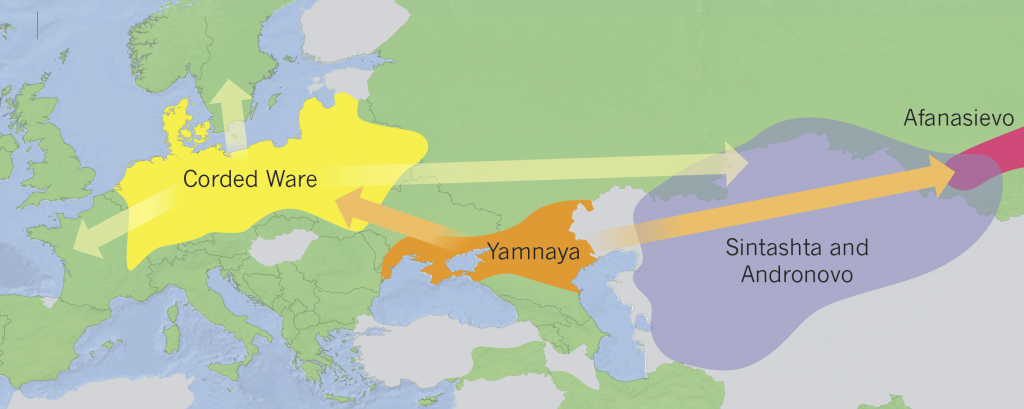
Before the famous 2015 papers (and even after them, if we followed their interpretation), we were left to wonder why the supposed vector of expansion of Indo-European languages, Corded Ware migrants – represented by R1a-Z645 subclades, and supposedly continued unchanged into modern populations in its ‘original’ ancestral territories, Balto-Slavic and Indo-Iranian – , were precisely the (phonetically) most divergent Indo-European languages – relative to the parent Late Indo-European proto-language.
My paper implied therefore the dismissal of an unlikely Indo-Slavonic group, as proposed by Kortlandt, and of a still less factible Germano-Slavonic, or Germano-Indo-Slavonic (?) group, as loosely implied by some in the past, and maybe supported in certain archaeological models (viz. Kristiansen or partially Anthony), and presently by some geneticists since their simplistic 2015 papers on “massive migrations from the steppe“, and amateur genetic fans with infinite pet theories, indeed.
A common Corded Ware substrate to Balto-Slavic and Indo-Iranian, and common also partially between Balto-Slavic and Germanic (as supported by Kortlandt, too, albeit with different linguistic connotations), would explain their common features. The Corded Ware culture (and Uralic, tentatively proposed by me as the group’s main language family) is a strong potential connection between them, further supported by phylogeography, too.
Other consequences
Interpretations in my paper help thus dismiss the simplistic Yamna -> Corded Ware -> Bell Beaker migration model implied with phylogeography in the 2000s, and revived again by geneticists and Kristiansen’s workgroup based on the famous 2015 papers, whereby – due to the “Yamnaya ancestral component” – the Yamna culture would have been composed of communities of R1a-M417 and R1b-M269 lineages which remained against all odds ‘related but separated’ for more than two thousand years, sharing a common unitary language (why? and how?), and which expanded from Yamna (mainly R1b-L23) into Corded Ware (mainly R1a-M417) and then into Bell Beaker (mainly R1b-L51), in imaginary migration waves whose traces Archaeology has not found, or Anthropology described, before.
While phylogeography (especially the distribution of ancient samples of certain R1b and R1a subclades) was the main genetic aspect I used in combination with Archaeology and Anthropology to challenge the reliability of the “Yamnaya ancestral component” in assessing migrations – and thus Kristiansen’s now-popular-again modified Kurgan model – , my main aim was to prove a recent expansion of Late Proto-Indo-European from the steppe, and a still more recent expansion of a common group of speakers of North-West Indo-European, the language ancestral to Italo-Celtic, Germanic, and probably Balto-Slavic (or ‘Temematic’, the NWIE substrate of Balto-Slavic, according to some linguists).
My arguments serve for this purpose, and modern distributions of haplogroups or admixture are fully irrelevant: I am ready to change my view at any time, regarding the role of any haplogroup, or ancestral component, archaeological data, or anthropological migration model, to the extent that it supports the soundest linguistic model.
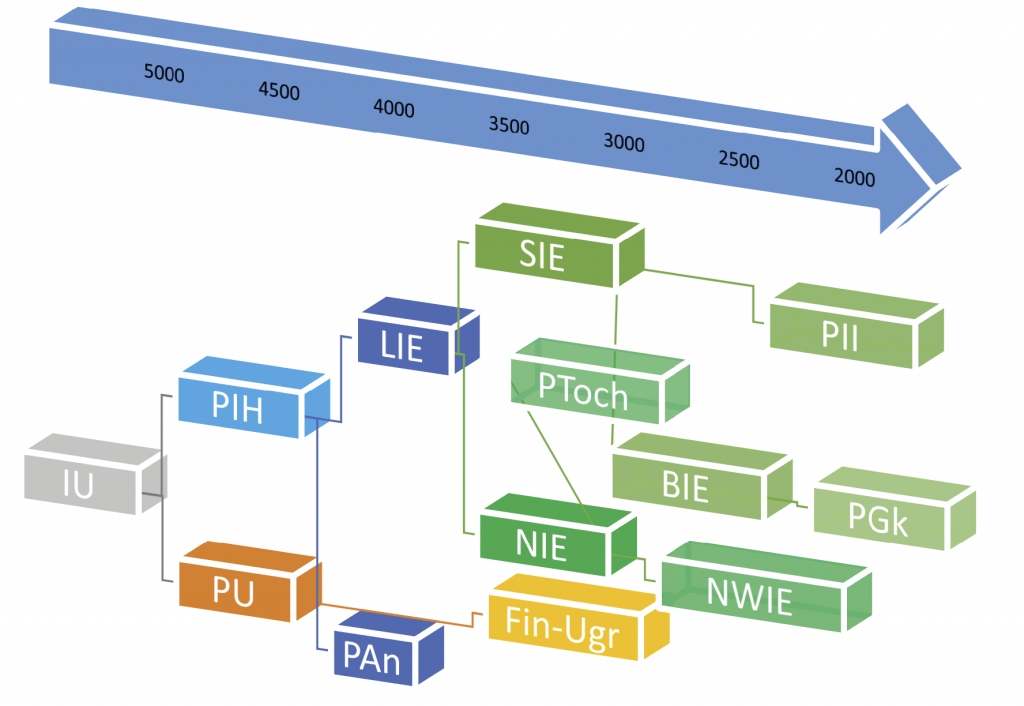
Gimbutas’ old theory of sudden and recent expansion served well to support a real community of Proto-Indo-European speakers, as did later the Yamna -> Corded Ware -> Bell Beaker theory that circulated in the 2000s based on modern phylogeography, and as did later partially Anthony’s updated steppe theory (2007). On the other hand, Kristiansen’s long-lasting connections among north-west Pontic steppe cultures and Globular Amphorae and Trypillian cultures, did not fit well with a close community expanding rapidly – although recent genetic data on Trypillia and Globular Amphorae might be compelling him to improve his migration theory.
So, if data turns out to be not as I expect now, I will reflect that in future versions of the paper. I have no problem saying I am wrong. I have been wrong many times before, and something I am certain is that I am wrong now in many details, and I am going to be in the future.
If, for example, R1b-L23(xZ2105) is demonstrated to come from Hungary and not the steppe (as supported by Balanovsky) or R1a-M417 samples are proved to have expanded with West Yamna settlers (as recently proposed by Anthony, see below the Balto-Slavic question), I would support the same model from a linguistic point of view, but modified to reflect these facts. Or if a direct migration link is found in Archaeology from Yamna to Corded Ware, and from Corded Ware to Bell Beaker (as proposed in the 2015 papers), I will revise that too (again, see the image below). Or, if – as Lazaridis et al. (2017) paper on Minoans and Mycenaeans suggested – the Anatolian hypothesis (that is, one of the multiple ones proposed) turns out to be somehow right, I will support it.
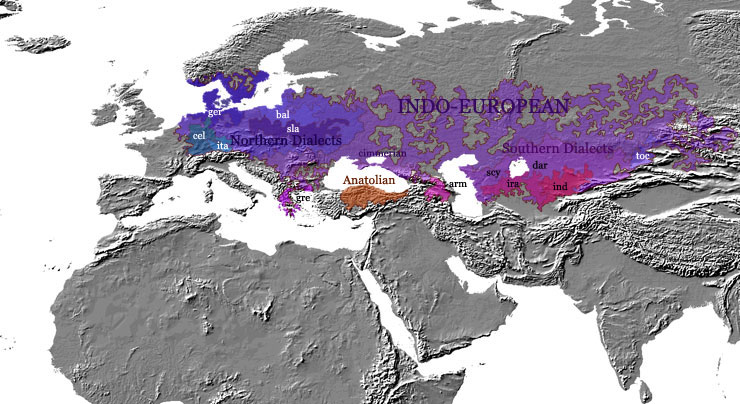
Haplogroups are the least important aspect of the whole model, they are just another data that has to be taken into account for a throrough explanation of migrations. It has become essential today because of the apparent lack of vision on the part of geneticists, who failed to use them to adjust their findings of admixture with findings of haplogroup expansions, favouring thus a marginal theory of long-lasting steppe expansion instead of the mainstream anthropological models.
Since many of these alternative scenarios seem less and less likely with each new paper, it is probably more efficient to talk about which developments are most likely to challenge my model.
Main points
My main predictions – based mostly on language guesstimates, archaeological cultures, and anthropological models of migration -, even with the scarce genomic data we had, have been proven right until know with new samples from Mathieson et al. (2017) and Olalde et al. (2017), among other papers of this past year. These were my original assumptions:
(1) A Middle Proto-Indo-European expansion defined by the appearance of steppe ancestry + reduction in haplogroup diversity and expansion of (mainly) R1b-M269 and R1b-L23 lineages;
(2) A Late Proto-Indo-European expansion defined by steppe ancestry + reduction in haplogroup diversity and expansion of (mainly) R1b-L23 subclades; and
(3) A North-West Indo-European expansion defined by steppe ancestry + reduction in haplogroup diversity and expansion of (mainly) R1b-L51 subclades.
The expansion of Corded Ware peoples, associated with steppe ancestry + reduction in haplogroup diversity and expansion of (mainly) R1a-Z645 subclades, represents thus a different migration, which is compatible with the different nature of the Corded Ware culture, unrelated to Yamna and without migration waves from one to the other (although there were certainly contacts in neighbouring regions).
As you can see, neither of the 3+1 expansion models imply that no other haplogroup can be found in the culture or regions involved (others have in fact been found, and still the models remain valid): these migrations imply a reduction of haplogroup diversity, and the expansion of certain subclades as is common in population expansions throughout history. While we all accept this general idea, some people have difficulties accepting just those cases not compatible with their dreams of autochthonous continuity.
Nevertheless, there are still voids in genetic investigation.
Controversial aspects
In my humble opinion, these are potential conflict periods and the most likely areas of change for the future of the theory:
1. When and how did R1b-M269 lineages become “chiefs” in the steppe?
Based on scarce data from Khvalynsk, it seems that during the Neolithic there were many haplogroups in the North Pontic and North Caspian steppes. A reduction to R1b-M269 subclades must have happened either just before or (as I support) during (the migrations that caused) the Suvorovo-Novodanilovka expansion among Sredni Stog, probably coinciding also with the expansion (or one of the expansions) of CHG ancestry (and thus the appearance of ‘Steppe component’ in the steppe). My theory was based initially on Anthony’s account and TMRCA of haplogroups of modern populations (both ca. 4200-4000 BC), but recent samples of the Balkans (R1b-M269 and steppe ancestry) seem to trace the population expansion some centuries back.
If my assessment is correct, then modern populations of haplogroup R1b-M269* and R1b-L23* in the Balkans probably reflect that ancient expansion, and samples related to Proto-Anatolian cultures in the Balkans will most likely be of R1b-M269 subclades and R1b-L23*. After admixture in the Balkans, posterior migrations of Anatolian languages into Anatolia might be associated with a different admixture component and haplogroups, we don’t have enough data yet.
If the haplogroup reduction and expansion in Khvalynsk happened later than the Suvorovo-Novodanilovka expansion, then we might find the expansion of Pre- or Proto-Anatolian associated with many different haplogroups, such as R1b (xM269), R1a, I, J, or G2, and more or less associated with steppe ancestry in the Balkans.
Another reason for finding such variety of haplogroups in ancient samples from the Balkans would be that this Khvalynsk group of “chiefs” traversed – and mixed with – the Sredni Stog population. Nevertheless, if we suppose homogeneity in haplogroups in Khvalynsk during the expansion, a high proportion of different haplogroups explained by admixture with the local population of Sredni Stog would challenge the whole “chief domination” explanation by Anthony, and we would have to return to the “different culture” theory by Rassamakin and potentially an older migration from Khvalynsk. In any case, both researchers show clear links of the Suvorovo-Novodanilovka phenomenon to Khvalynsk, and a differentiation with the surrounding Sredni Stog culture.
A less likely model would support the identification of the whole Eneolithic Pontic-Caspian steppe as a loose Indo-Hittite-speaking community, which would be in my opinion too big a territory and too loose a cultural bond to justify such a long-lasting close linguistic connection. This will probably be the refuge of certain people looking desperately for R1a-IE connections. However, the nature of the western steppe will remain distinct from Late Proto-Indo-European, which must have developed in the Yamna culture, so autochthonous continuity is not on the table anymore, in any case…
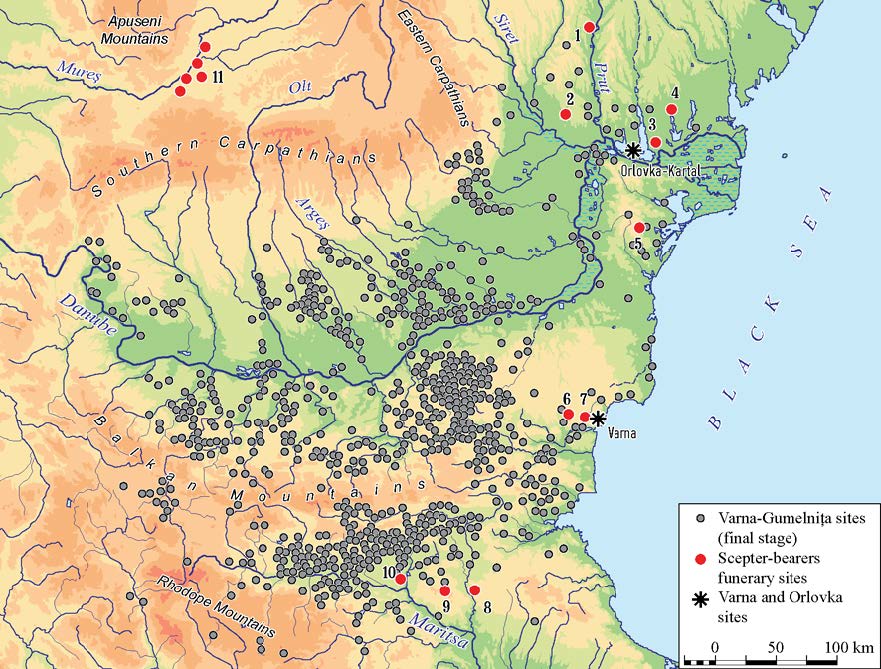
2. How did R1a-M417 (and especially R1a-Z645) haplogroups came to dominate over the Corded Ware cultures?
If I am right (again, based on TMRCA of modern populations), then it is precisely at the time of the potential expansion of Proto-Corded Ware from the Dnieper-Dniester forest, forest-steppe, and steppe regions, ca 3300-3000. Furholt’s recent radiocarbon analysis and suggestions of a Lesser Poland origin of the third or A-horizon, on which disparate archaeologists such as Anthony or Klejn rely now, seem to suggest also that Corded Ware was a cultural complex rather than a compact culture reflecting a migration of peoples – similar thus to the Bell Beaker complex.
This cultural complex interpretation of Corded Ware contrasts with the quite homogeneous late samples we have, suggesting clear migration waves in northern Europe, at least at some point in time, so Genomics will be a great tool to ascertain when and from where approximately did Corded Ware peoples expand. Right now, it seems that Eneolithic Ukraine populations are the closest to its origin, so the traditional interpretation of its regional origin by Kristiansen or Anthony remains valid.
3. How was Indo-Iranian adopted by Corded Ware invaders?
This is rather an anthropological question. We need reasonable models of founder effect/cultural diffusion necessary for that to happen – similar to the ones necessary to explain the arrival of N1c subclades into north-east Europe, or the arrival of R1b subclades in Basque/Iberian-speaking regions in south-west Europe. My description of potential events in the eastern steppe – based partially on Anthony – is merely a short sketch. Genomic data is unlikely to offer more than it does today (replacement of haplogroups, and gradually of some steppe component, by late Corded Ware groups in the steppe), but let’s see what new samples can contribute.
As for what some Indians – and other people willing to confront them – are looking for, regarding R1a-M417 and/or Indo-European origins in India, I don’t see the point, we already know a) that the origin of the expansion is in the steppe and b) that Hindu nationalist biggots will not accept results from research that oppose their views. I don’t expect huge surprises there, just more fruitless discussions (fomented by those who live from trolling or conspiracies)…
4. Yamna settlers from Hungary
Anthony’s new theory – and the nature of Balto-Slavic – hinges on the presence of R1a-M417 subclades (associated with later Corded Ware samples) in Yamna settlers of Hungary, potentially originally from the North Pontic area, where the oldest sample has been found.
My ‘modified’ version of Anthony’s new model (the only I deem just remotely factible) includes the expansion of a Proto-Corded Ware from Lesser Poland, but (given the overwhelming R1b found in East Bell Beaker), with R1a-M417 being associated with the region. How to explain this language change with objective data? Well, we have Bell Beaker expanding to these areas at a later time, so we would need to find R1b-L23 settlers in Lesser Poland, and then a resurge of R1a-M417 haplogroup. If not, resorting yet again to cultural diffusion Yamna “patrons” to Corded Ware “clients” of Lesser Poland would bring us to square one, now with the ‘steppe ancestry’ controversy included…
Since some Eastern Europeans are (for no obvious reason whatsoever) putting their hopes on that IE-R1a-CWC association, let’s hope some samples of R1a-M417 in Yamna or Hungary give them a break, so that they can begin accepting something closer to mainstream anthropological models. We could then work from there a Yamna-> Bell Beaker / North-West Indo-European association truce, and from there keep accepting that no single haplogroup from Yamna settlers is linked with modern languages, cultures or ethnic groups.
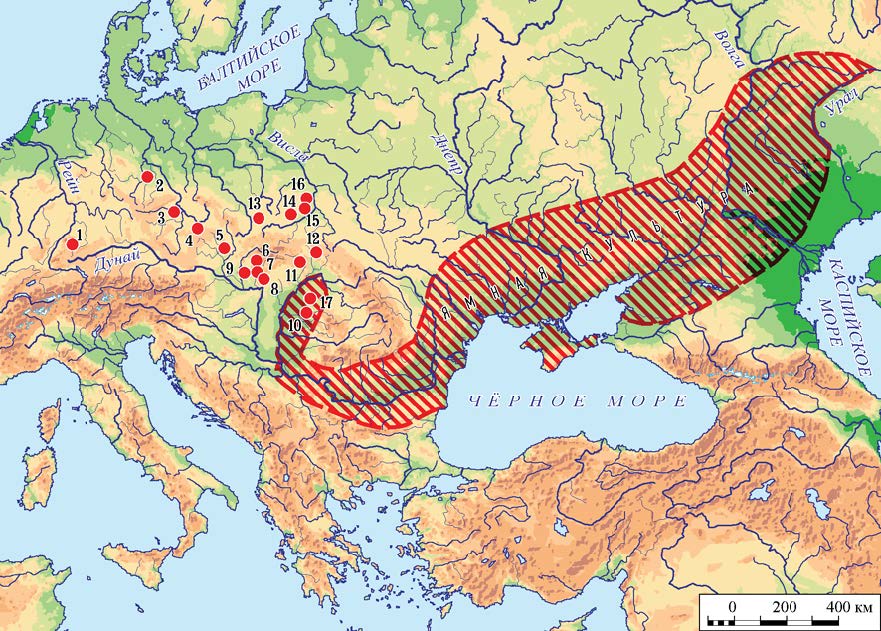
5. How and when was Balto-Slavic associated with haplogroup R1a?
If we accept the Southern or Graeco-Aryan nature of Balto-Slavic with influence from an absorbed North-West Indo-European dialect, “Temematic” (as Kortlandt does), then Indo-Slavonic adopted in the steppe from Potapovka by Sintashta and Poltavka populations divided ca. 2000 BC into Indo-Iranian (migrating to the east with Andronovo), and Balto-Slavic (migrating westward with the Srubna culture). History from there is not straightforward, and it should follow Srubna, Thraco-Cimmerian, or other late expansions from cultures of the steppe.
On the other hand, if it is a Northern dialect related closely to Germanic and Italo-Celtic (in a North-West Indo-European group), then its origin has to be found in the initial expansion of East Bell Beakers, and its development into either the Únětice culture (of Balkan and thus potentially “Southern IE” influence), or the Mierzanowice-Nitra culture (of Corded Ware and thus potentially Uralic influence), or maybe from both, given the intermediate substrate found in Germanic and Balto-Slavic.
It is my opinion that the association of Balto-Slavic with haplogroup R1a is quite early after the East Bell Beaker expansion, probably initially with the subclade typically associated with West Slavic, R1a-M458. I have not much data to support this (apart from the most common linguistic model), just modern haplogroup distribution maps and common TMRCA, and highly hypothetical archaeological-anthropological models. Genetics will hopefully bring more data.
Let’s see also what information on ancient haplogroups we can obtain from the Tollense valley (already showing a close cluster with modern West Slavic populations) and steppe regions.
6. How did Germanic, Celtic, and Italic expand?
Germanic is probably the most interesting one. Following the expansion of R1b-L51 subclades (especially R1b-U106) and steppe ancestry (a confounding factor, with the previous expansion of R1a-Z284 subclades) in Scandinavia is going to be fascinating. Anthropological models already point to a linguistic and archaeological expansion of Pre-Germanic with Bell Beaker peoples.
The expansion of Celtic seems to be associated with chiefdoms, untraceable today in terms of haplogroups, and it seems thus different from previous expansions. New studies might tell how that happened, if it was actually in successive ways, as proposed, or maybe we don’t have enough data yet to reach conclusions.
We don’t know either how Italic expanded into the Italian Peninsula, or whether Latin expanded with peoples from Italy, if at all, or it was mostly a cultural diffusion event, as it seems.
Regarding Etruscan, while I think it is a controversy initiated based on fantastic accounts, and ignited with few finds of Middle Eastern ancestry (that seem logical from the point of view of regional contacts), it will be important for Italian linguists and archaeologists, also to accept the most likely scenario.
As for Palaeo-Hispanic languages, while steppe ancestry is found quite reduced in R1b-L51 subclades (after so many different expansions and admixture events since the departure from the steppe), their distribution from the Chalcolithic onwards and the resurgence of native haplogroups may serve to ascertain which Pre-Roman tribes were associated with the oldest regions where these subclades dominated. For that aim, a closer look at the developments in Aquitania and other pre-Roman Vasconic- and Iberian-speaking regions may shed some light on how founder effects might develop to leave the native language intact (in a case similar to the adoption of Indo-Iranian by post-Corded Ware Sinthastha and Potapovka in the eastern Pontic-Caspian steppe).
NOTE: Although mostly unrelated, linguistic questions may also be somehow altered with a change of migration models. For example, our current Corded Ware Substrate Hypothesis – strongly contested by Kortlandt and others – implies that Uralic was potentially the language spoken by Eneolithic Ukraine / Proto-Corded Ware peoples, therefore early Uralic languages were spoken by Corded Ware peoples, as a substrate for Germanic and Balto-Slavic, and Balto-Slavic and Indo-Iranian. If an Indo-Hittite branch different from Late PIE is accepted for Eneolithic Ukraine (thus suggesting a millennia-long cultural-historical community in the steppe), then the model still stands (e.g. Ger. and BSl. *-mos/-mus, as stated by Kortlandt, would correspond to the oldest morphological IE layer). As you can read in the different versions of our model, the different possibilities for the common substrate are stated, and the most likely one selected. But the most likely a priori option sometimes turns out to be wrong…
NOTE 2: You can comment whatever you want here, but I opened a specific thread in our forum if you want serious comments on the model to stuck and be further discussed.
Featured images: from the book Interactions, changes and meanings. Essays in honour of Igor Manzura on the occasion of his 60th birthday. Țerna S., Govedarica B. (eds.). 2016. Kishinev: Stratum Plus.
See also:
- Science and Archaeology (Humanities): collaboration or confrontation?
- Massive Migrations? The Impact of Recent aDNA Studies on our View of Third Millennium Europe
- The new “Indo-European Corded Ware Theory” of David Anthony
- Bell Beaker/early Late Neolithic (NOT Corded Ware/Battle Axe) identified as forming the Pre-Germanic community in Scandinavia
- The renewed ‘Kurgan model’ of Kristian Kristiansen and the Danish school: “The Indo-European Corded Ware Theory”
- Correlation does not mean causation: the damage of the ‘Yamnaya ancestral component’, and the ‘Future America’ hypothesis
- Something is very wrong with models based on the so-called ‘Yamnaya admixture’ – and archaeologists are catching up (II)
- New Ukraine Eneolithic sample from late Sredni Stog, near homeland of the Corded Ware culture
- Germanic–Balto-Slavic and Satem (‘Indo-Slavonic’) dialect revisionism by amateur geneticists, or why R1a lineages *must* have spoken Proto-Indo-European
- Heyd, Mallory, and Prescott were right about Bell Beakers